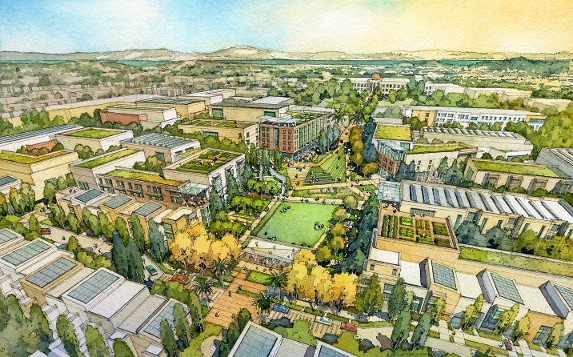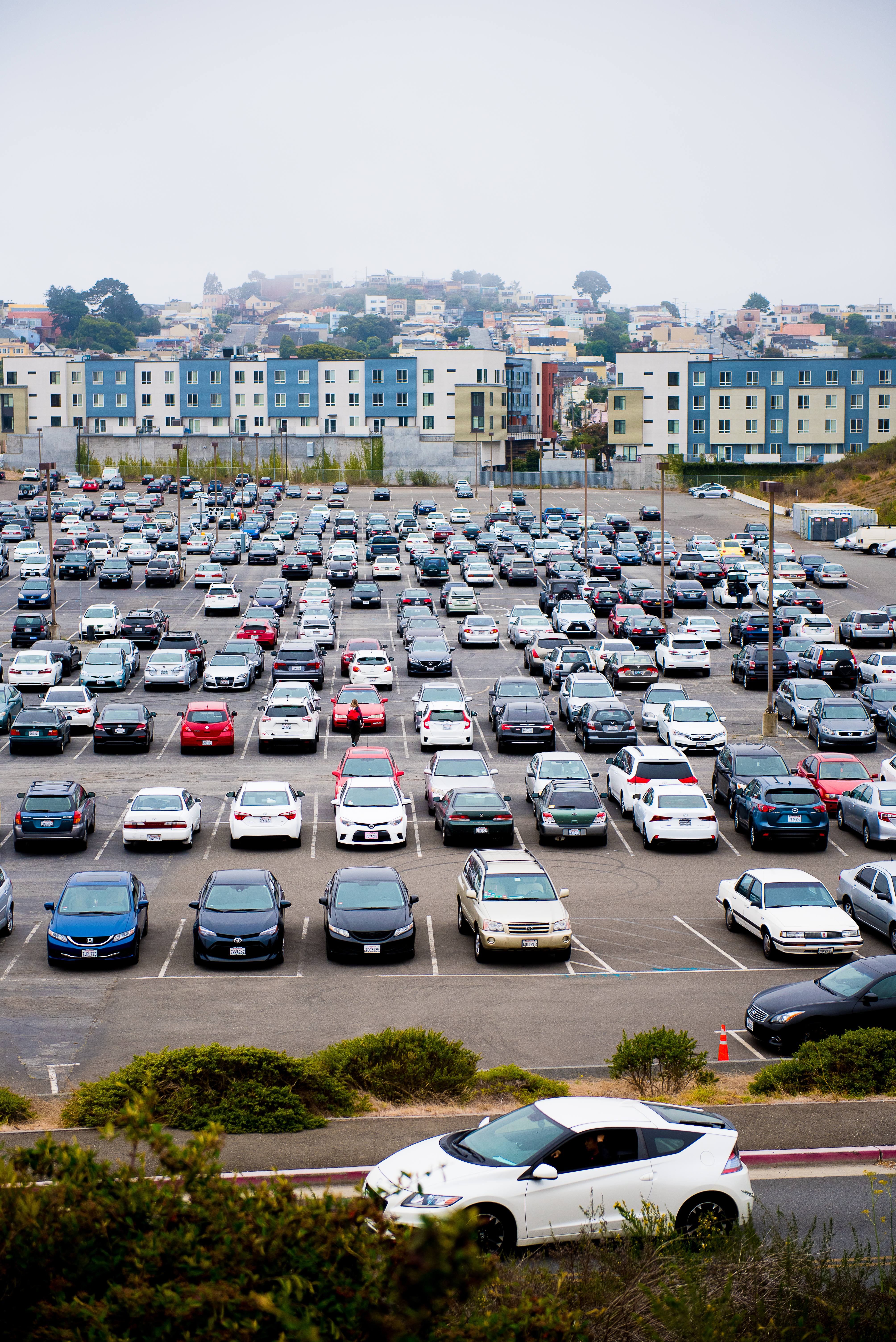Is it all that bad? Understanding the Balboa Reservoir Project
By Julia Fuller
When I asked a passing student on the Ocean Campus of City College how he felt about the proposed changes to the Balboa Reservoir, his immediate response was, “Not this again, they should just build it already”. His words echoed many voices I had heard before since discussion began in January 2015.
With developments underway, the project is now in the planning process. The San Francisco Utilities Commission released its Requests For Proposals (RFP) document this past March in 2017. This one hundred and fifty page document outlines a myriad of items, including plans for next steps to move the project forward. It also included suggestions from the City College Board of Trustees and input from members of the surrounding community.
The RFP document is a very thorough recapitulation of the project, and it seems to have taken into consideration the specifics of the neighborhood and the opinions of its primary inhabitants. That being said, it is important to pay special attention to the concerns and feelings of the community as the planning and development process continues. The common people’s concerns are often addressed inadequately, even in thorough examinations like the RFP.
Just like in so many other parts of San Francisco, one of the primary concerns amongst neighborhood residents is the lack of affordable housing in the area.
The Balboa Reservoir project plans to address this by constructing a predetermined number of low and middle income housing units.
Because the proposed complex will contain over 25 units, the recently passed housing law known as “Proposition C” will require the developers to make at least 25 percent of their on-site units affordable. At least 15 percent of all the units must be priced to be affordable for low income households and 10 percent must be priced for middle income households, adding up to a total of 25 percent of all units, as stated before.
To qualify for the low income housing rental rates you must not make above 55 percent of the area median income. This means, for example, if you are a single person household, you cannot make above $39,250 per year if you want to live in a low income unit.
The rules to determine whether or not a household is low income are not always fair and can be somewhat unjust to large families.
While a single person can obtain a low income unit with the aforementioned income, a five person household must make less than $56,050 per year in order to qualify. The notion that a household of five people could live on such a pittance is absurd, and the system will almost certainly be discriminatory towards large households with multiple children.
Another common concern voiced by neighborhood residents is with the invasive nature of urban development. The construction necessary to modify the reservoir would almost certainly increase local levels of traffic congestion and air pollution. The work would also add unwanted noise pollution to an already chaotic soundscape. Older residents and xenophobes fear that the project will cause unwanted gentrification in the area and disrupt the current cultural status quo in the neighborhood.
Due to the mounting concerns the community has voiced about the project, Mayor Ed Lee and District 7 Representative Norman Yee have formed The Community Advisory Committee (CAC), which is a group designed to help with the planning of the project and connect the community with the various developers so they can more effectively communicate with one another about their ideas and concerns.
Despite city officials’ efforts to level the playing field by including community members in discussions with large corporate developers, many people have expressed that the CAC meetings on the project have not been adequately advertised, nor has anyone surveyed the populace thoroughly enough to fully understand everyone’s opinion. In short, there is a large portion of the community that feels their true opinions are not being represented.
Throughout the progression of the Balboa Reservoir project, it’s important to keep in mind that the democratic process is often messy and can be unjust, especially in situations dealing with large real estate developers.
Despite this potential bias against the natives of the neighborhood, positive change is impossible to achieve without compromise, and I feel that it is important to keep an open mind to the project as it moves forward. The project will not necessarily cause a negative change in the neighborhood and could in fact result in some improvements to the community.
There are many potential positive outcomes to weigh against concerns voiced by people in the community. The project will encourage students to commute and travel to campus via public transportation and will make roadways more friendly to pedestrians. There might be less on-campus parking if the project comes to fruition, but that means fewer cars on campus, which means a cleaner and safer environment for all of us. Affordable housing could also lead to more students living close to campus, which would decrease the number of vehicles on campus even further.
Also, the developers realize that City College is a commuting school. There are no dormitories. They understand that many parking spaces that will be lost if and when the current lot is modified, so the Project has proposed to build a parking structure on the property.
Project coordinators have also been in contact with people who work for Muni and Bart, with hopes to create a more accessible and convenient public transportation situation to compensate for the decrease in parking capacity.
We can all agree that, during the first few years of construction, it may be a bit more difficult to access the neighborhood and what it has to offer, but in the long run will we really regret the benefits this larger housing development could bring us? Only time will tell.



Guardsman, Julia Fuller:
Although Ms. Fuller is well-intentioned, her piece “Is it all that bad: Understanding the Balboa Reservoir Project” only provides a shallow understanding of the Reservoir Project.
Its major failing is its acceptance of the Project Staff’s representation (PR) of the Reservoir Community Advisory Committee/ RFP process as having actually incorporated community concerns and of representations of the Project being about affordable housing.
In point of fact, community concerns about parking and transportation have been sidestepped by the Project’s TDM solution of, in their own words: ” The Planning Department and SFMTA are proposing a Transportation Demand Management (TDM) study in coordination with CCSF Ocean Campus to reduce single-occupant vehicle trips by college staff, faculty, students, and neighborhood residents. ”
In point of fact, the Reservoir Project will give up public land that is currently used as a public benefit to CCSF students to private developer interests. Only 33% will be affordable housing; 50% will be market-rate, high cost housing; 17% will be middle-income housing (defined as being affordable to those of up to 150% of Bay Area median income). Furthermore the 33% affordable portion of housing–although (mis)represented as “in perpetuity”– will only be required to be affordable “for the useful life of the buildings” (55-75 years?).
To gain an improved and deeper understanding of the Reservoir Project, I hope you will review the attached critiques of the Reservoir Project:
Road to the Balboa Reservoir Project
Unaddressed Flaws in Balboa Reservoir Project
Balboa Reservoir’s TDM Non Sequitur
I have previously sent to Guardsman some exposés about the Balboa Reservoir staff’s’ undue influence on SFCCD, based on Sunshine Ordinance documents released by Planning Dept. Please share them with Ms. Fuller.